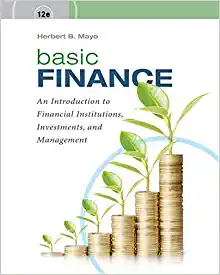1. If Kobol wishes to maximize its total firm value, would you recommend that it issue debt or equity to finance the land purchase? Explain. (3 Marks)
2. Construct Kobol's market value balance sheet before it announces the farmland purchase. (3 Marks)
3. Suppose Kobol decides to issue 100% equity to finance the farmland purchase. (15 Marks)
a. What is the net present value of the project?
b. Construct Kobol's market value balance sheet after it announces the farmland purchase using equity. What would be the new price per share? How many shares will Kobol need to issue to finance the purchase?
c. Construct Kobol's market value balance sheet after the equity issue but before the farmland purchase has been made. How many shares of common stock are now outstanding? What is the price per share?
d. Construct Kobol's market value balance sheet after the farmland purchase has been made.
4. Suppose Kobol decides to issue 100% debt to finance the farmland purchase. (6 Marks)
a. What will the market value of Kobol be if the purchase is financed entirely with debt?
b. Construct Kobol's market value balance sheet after both the debt issue and the farmland purchase. What is the price per share of the firm's stock?
5. Which method of financing maximizes the per-share stock price of Kobol's equity? (3 Marks)
MGT 339 (SUMMER 2018) INDIVIDUAL ASSIGNMENT Due Sunday, August 12th, 2018 (11:59pm) (By e-mail to the instructor) Required: 1. If Kobol wishes to maximize its total firm value, would you recommend that it issue debt or equity to finance the land purchase? Explain. (3 Marks) Construct Kobol's market value balance sheet before it announces the farmland purchase. (3 Marks) Suppose Kobol decides to issue 100% equity to finance the farmland purchase. (15 Marks) a. What is the net present value of the project? b. Construct Kobol's market value balance sheet after it announces the farmland purchase using equity. What would be the new price per share? How many shares will Kobol need to issue to finance the purchase? Construct Kobol's market value balance sheet after the equity issue but before the farmland purchase has been made. How many shares of common stock are now outstanding? What is the price per share? d. Construct Kobol's market value balance sheet after the farmland purchase has been made. 4. Suppose Kobol decides to issue 100% debt to finance the farmland purchase. (6 Marks) a. What will the market value of Kobol be if the purchase is financed entirely with debt? b. Construct Kobol's market value balance sheet after both the debt issue and the farmland purchase. What is the price per share of the firm's stock? 5. Which method of financing maximizes the pershare stock price of Kobol's equity? (3 Marks) Page 2 of4 MGT 339 (SUMMER 2018) INDIVIDUAL ASSIGNMENT Due Sunday, August 12th, 2018 (11:59pm) (By e-mail to the instructor) Please submit a cover page. You will find the template on the course portal. Please show your work in detail. You can submit your excel file along with your writeup and cover page. (Total Marks = 80) Question 1 Capital Structure (30 Marks) The year is 2030, and the world has run out of oil. Fortunately, a crop called Extrophia (which can be regrown) has emerged to meet humanity's needs, as it can be processed into a type of fuel which can run the new breed of Extrocars and Extrotrains. Kobol Processing Inc began its life 12 years ago when it started purchasing land to rent out to farmers for growing Extrophia. The company has shown a profit in all of its years of existence, and the shareholders simply adore the company's management. Prior to founding Kobol, its CEO, Shang Tsung, was the founder and CEO of a failed crude oil refining operation. The bankruptcy and the resulting Companies' Creditors Arrangement Act (CCAA)-driven proceedings made him extremely averse to debt financing. As a result, the company is 100% equity financed, with 20 million common shares outstanding. The stock currently trades at $35.50 per share. Kobol is considering a plan to purchase a rather large tract of farmland in Saskatchewan for $60 million. As before, the land will be leased to Extrophia farmers, and the purchase will increase Kobol's annual pre-tax earnings by $14 million in perpetuity. You, the company's new CFO, have been asked to spearhead the project. You have determined that the company's current cost of capital is 12.5%. A board member, who is also a friend, feels that the company could be more valuable if it included debt in its capital structure, so she is wondering whether you should issue debt to finance the project. Based on your conversations with the investment banks, you feel that the company can issue bonds at par value with an 8% coupon to fund the entire farmland purchase. Kobol has a 40 percent corporate tax rate. Page 1 of4








